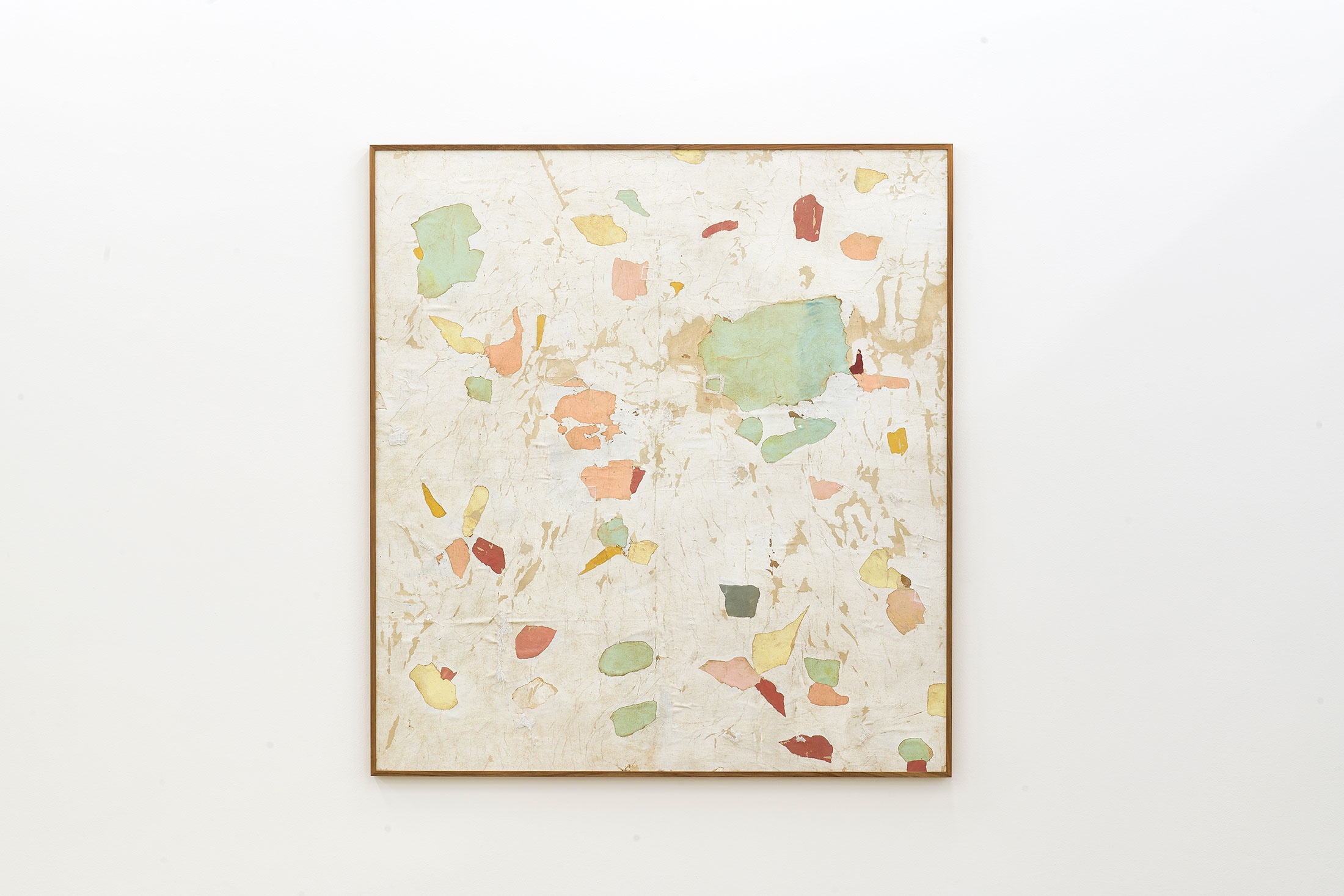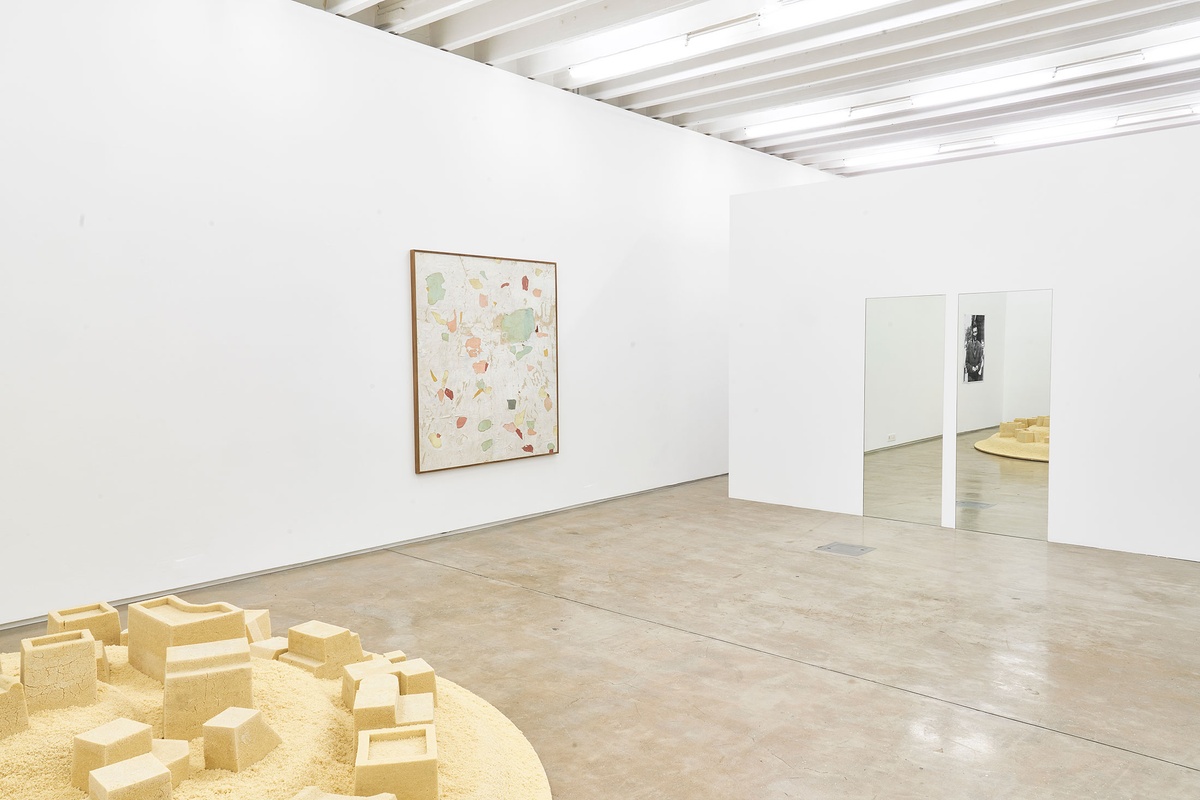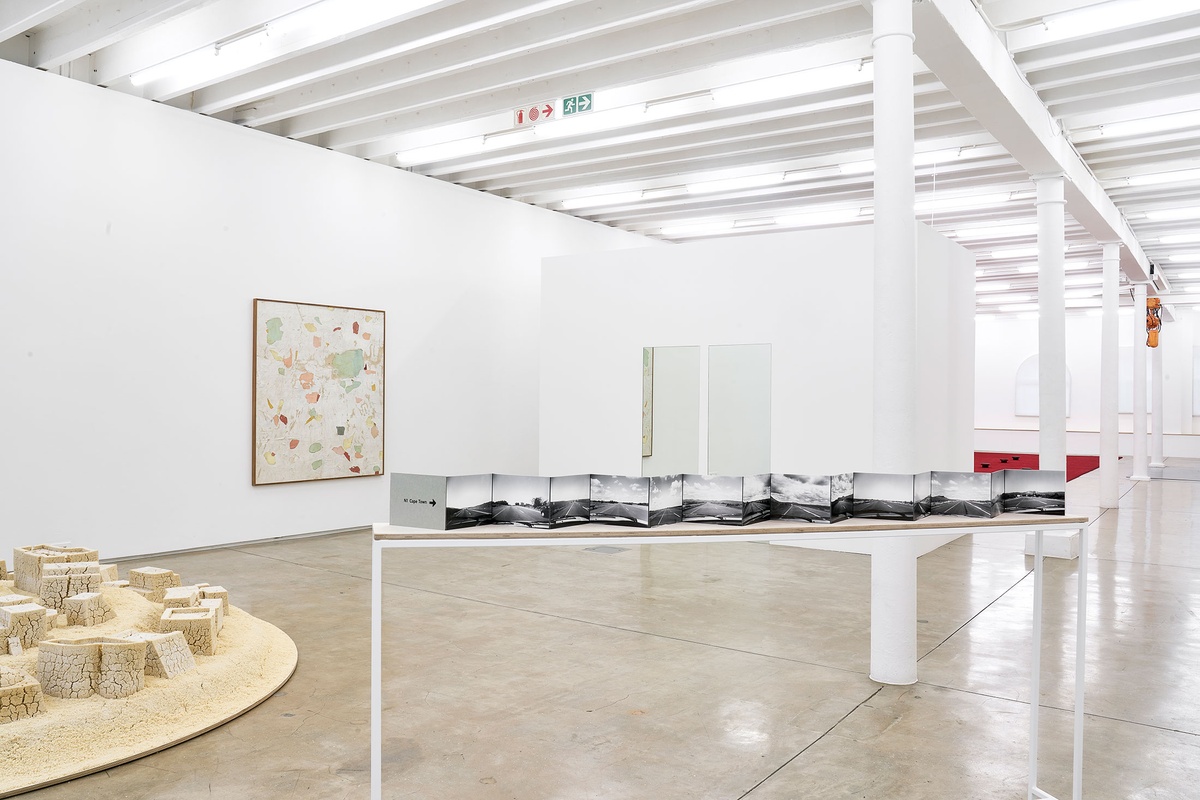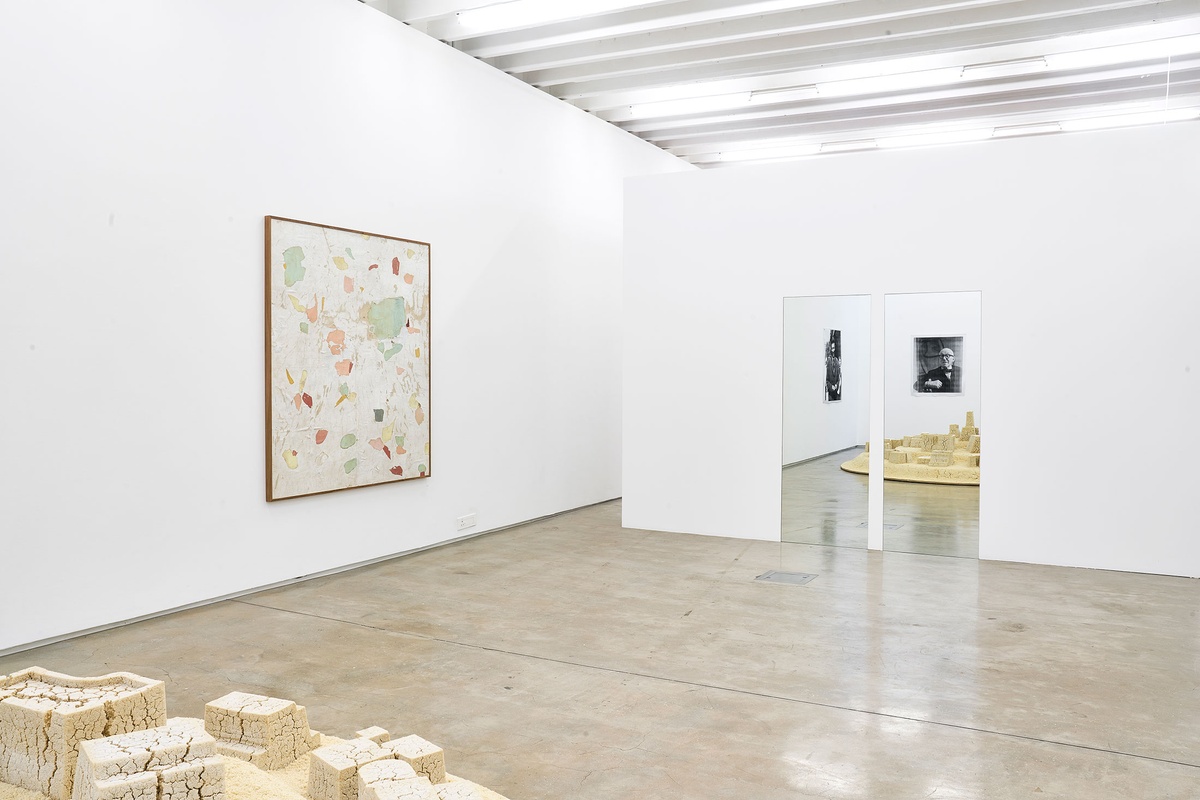Asemahle Ntlonti

Speaking of her mother’s homestead, Ntlonti says, “The wall looks like a topographical painting, mud filling the cracks, pink paint: it’s easy and natural, and that’s the way I want to work. People think these huts are beautiful, but they don’t consider them to be ‘art’. What, then, is abstraction, for me, as a Xhosa person from the Eastern Cape? This is not resolved. I have to challenge myself.”
b.1993, Cape Town
Asemahle Ntlonti revolves the canvas one way and then another, applying, glueing, stripping, and scrubbing at both the back and front planes. The method the artist has devised etches a feeling of ‘round’ within her paintings, where paper is no longer flat; where what will become the face begins from behind. Working on the floor rather than against the wall, and across multiple works at any one time, Ntlonti interprets the colours and environments of her ancestral home in the Eastern Cape, “researching to understand myself, having conversations with my people because my history is not vastly written about.” The works are at once landscapes of place as well as portraits of interior spaces with their attendant intimacies.


